
| Donate $25 for two DVDs of the Cryptome collection of files from June 1996 to the present |
|
19 April 2005. Add Google satellite photo.
|

|
| www.maps.google.com
|
26 June 2002. Add TerraServer USGS photos (monochrome), February 1996 and February 1997.
From the report Taking Stock: Worldwide Nuclear Deployments 1998, by William M. Arkin, Robert S. Norris and Joshua Handler, published in March 1998 by the Natural Resources Defence Council.
http://www.nrdc.org/nuclear/tkstock/p53-94.pdfTEXAS
Rank: 10
Nuclear Warheads: 350
Pantex
DOE FACILITYTEXAS ranks 10th in number of nuclear warheads deployed, a change from 5th place (and 1,365 warheads) in 1992 and 6th place in 1985 (630 warheads). However, nuclear weapons are stored only at the Pantex Plant of the Department of Energy outside of Amarillo on a temporary basis while they await dismantlement. Though the composition is constantly in flux depending upon which warheads are scheduled, the current pool includes some 150 W69 SRAM warheads and 200 W79 8-inch artillery shells.
In October 1950 the Atomic Energy Commission (AEC) determined there was need for a second facility in addition to Burlington, and Pantex was chosen in 1951. Originally built by the Army Ordnance Corps in 1942, Pantex was used during World War II to load conventional munitions (bombs and artillery shells) with TNT. Throughout late 1950 and 1951 the plant was rehabilitated and began full operation (with assembly of Mark VI nuclear bombs) in May 1952. The operating contractor, the Proctor & Gamble Company, ran it for the U.S. Army Ordnance Command beginning in 1953. In 1956 Mason & Hanger took over and has run it ever since. With some exceptions Pantex evolved in the early years to become the assembly facility for the Livermore Laboratory, and Burlington assembled Los Alamos designed warheads.
By November 1951, with the Cold War heating up, the AEC estimated that five plants would be needed to match the future numbers of warheads that were planned to be built. A third facility was planned at Spoon River, Illinois. But by 1953 it was decided that two plants would suffice to meet production goals and plans for the other three were canceled. The Burlington Plant operated until 1975 when its functions were transferred to Pantex.
The disassembly/modification work continued at Medina until 1965, when all functions were transferred to Pantex. At the current 1,300 warhead per year retirement rate, it is estimated that some 300 to 400 weapons are present at Pantex at any one time. Warheads in the pipeline to be dismantled are also stored at Kirtland AFB in New Mexico. These include 200 W79s, 1,100 W69 SRAM warheads, and 450 W56 Minuteman II warheads. The last W48 155mm (6-inch) artillery warheads, W70 Lance warheads, W68 Poseidon warheads, and B57 nuclear depth and strike bombs have been completely retired.
Over the ten year period from October 1986 through September 1996, Pantex disassembled 12,514 warheads. It has more than enough capacity to disassemble the entire stockpile at current workload levels and will complete its current work orders in the year 2000. As of the end of 1997 there are approximately 10,750 “pits” (nuclear cores of warheads that have been dismantled) in storage at Pantex.
28 April 2002
Source of colors maps and photos:
Mapquest.com
The Pantex Plant website: http://www.pantex.com/
http://www.dnfsb.gov/pub_docs/pantex/sir_px.html (Defense Nuclear Facilities Safety Board)
|
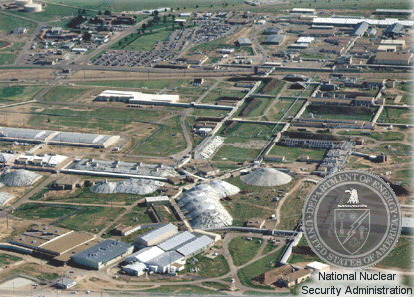 Source Conical-shaped structures are warhead assembly bays. |
 |
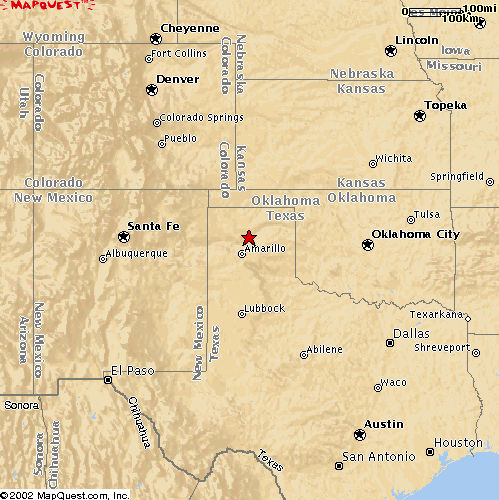 |
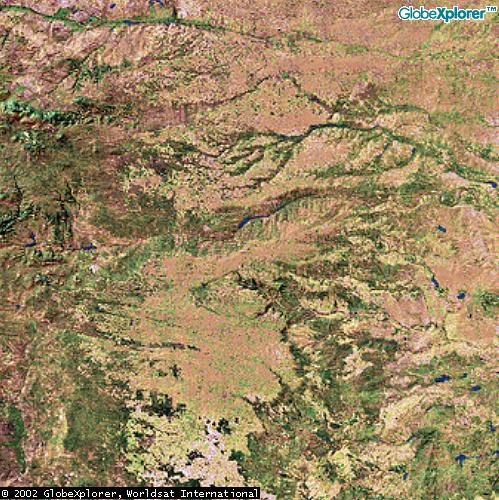 |
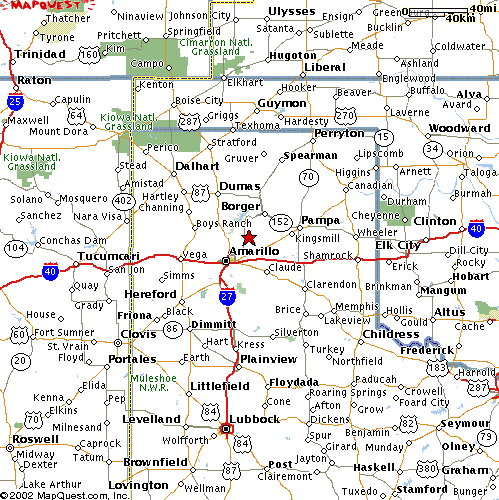 |
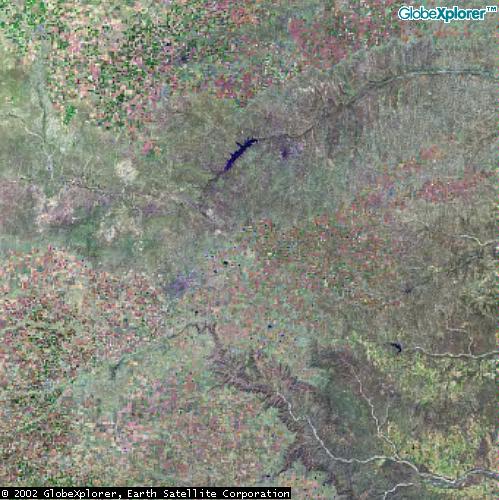 |
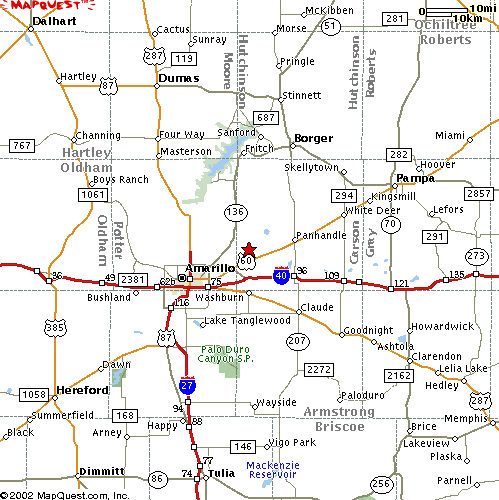 |
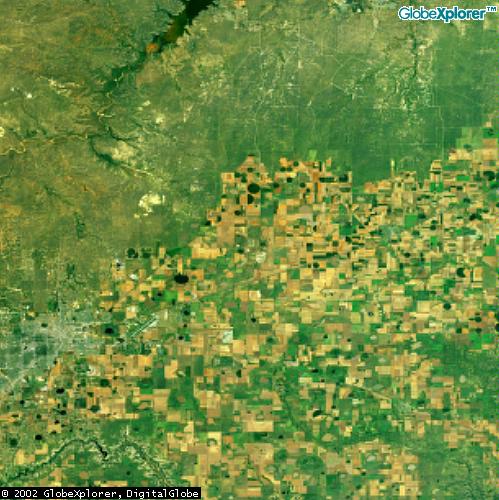 |
 |
 |
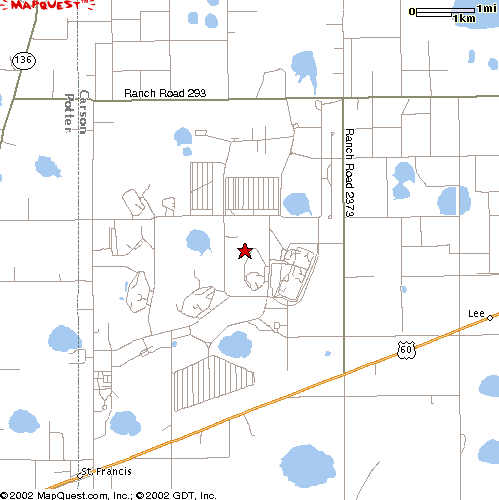 |
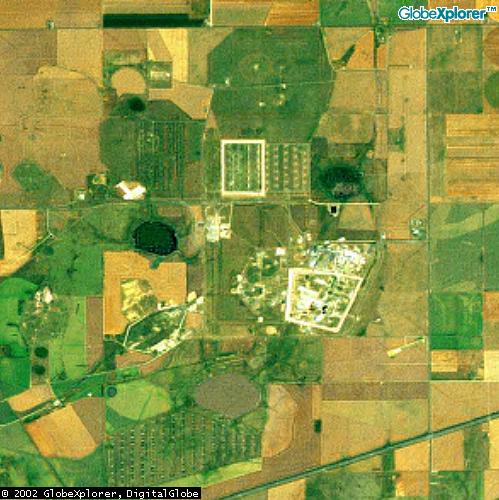 |
 |
| Darker, left, part of photos following dated February 1997, lighter part
at right, February 1996.
|
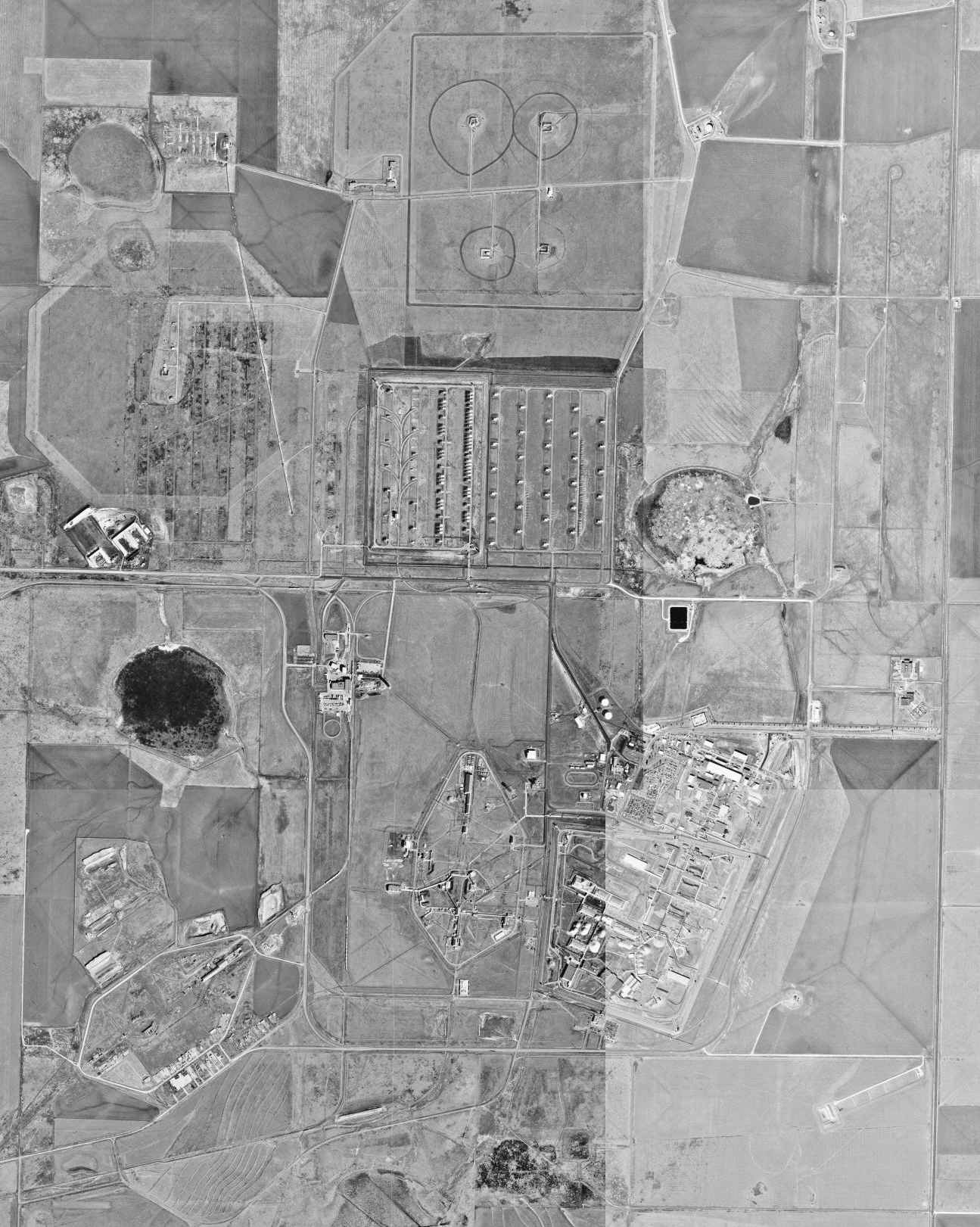 |
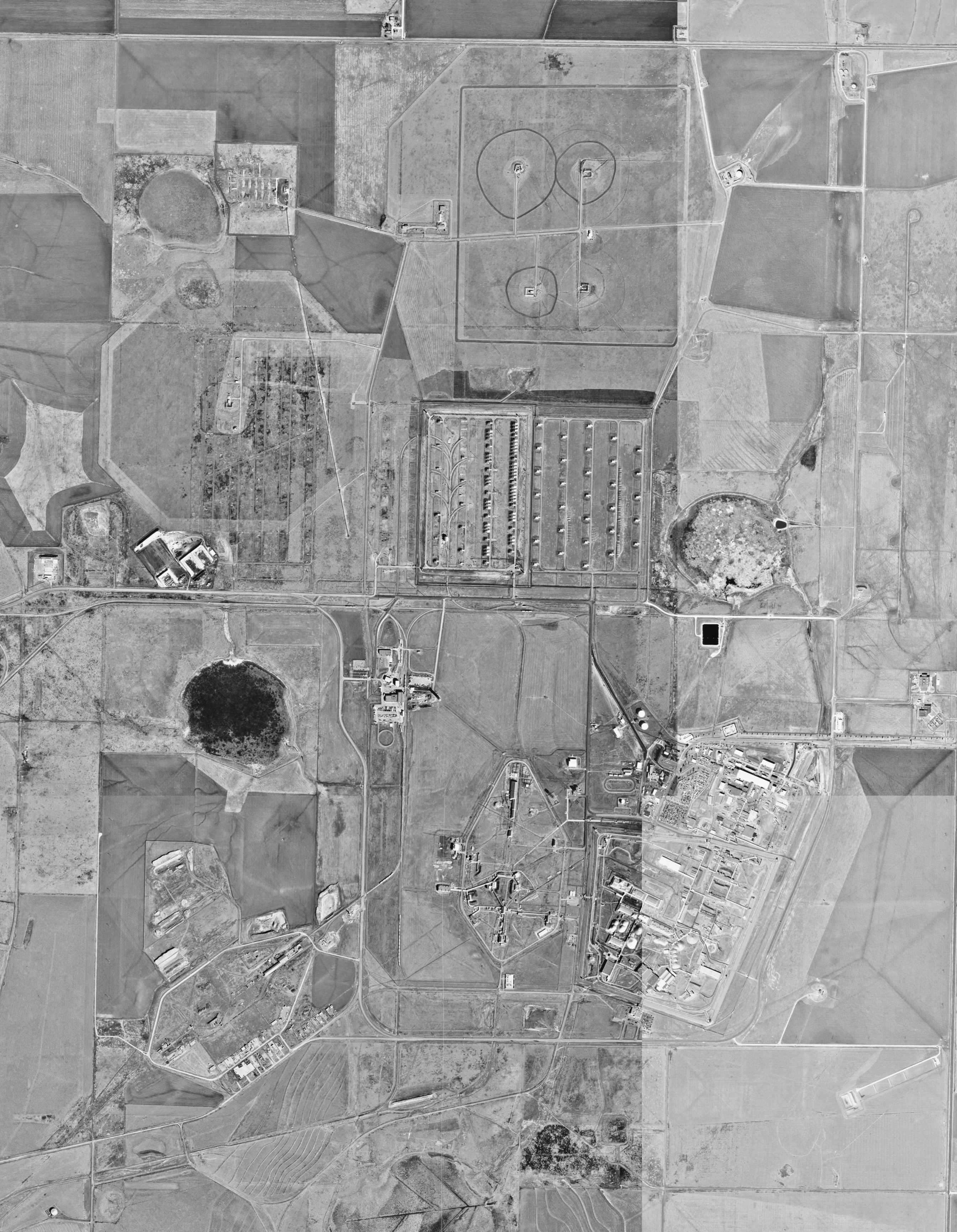 |
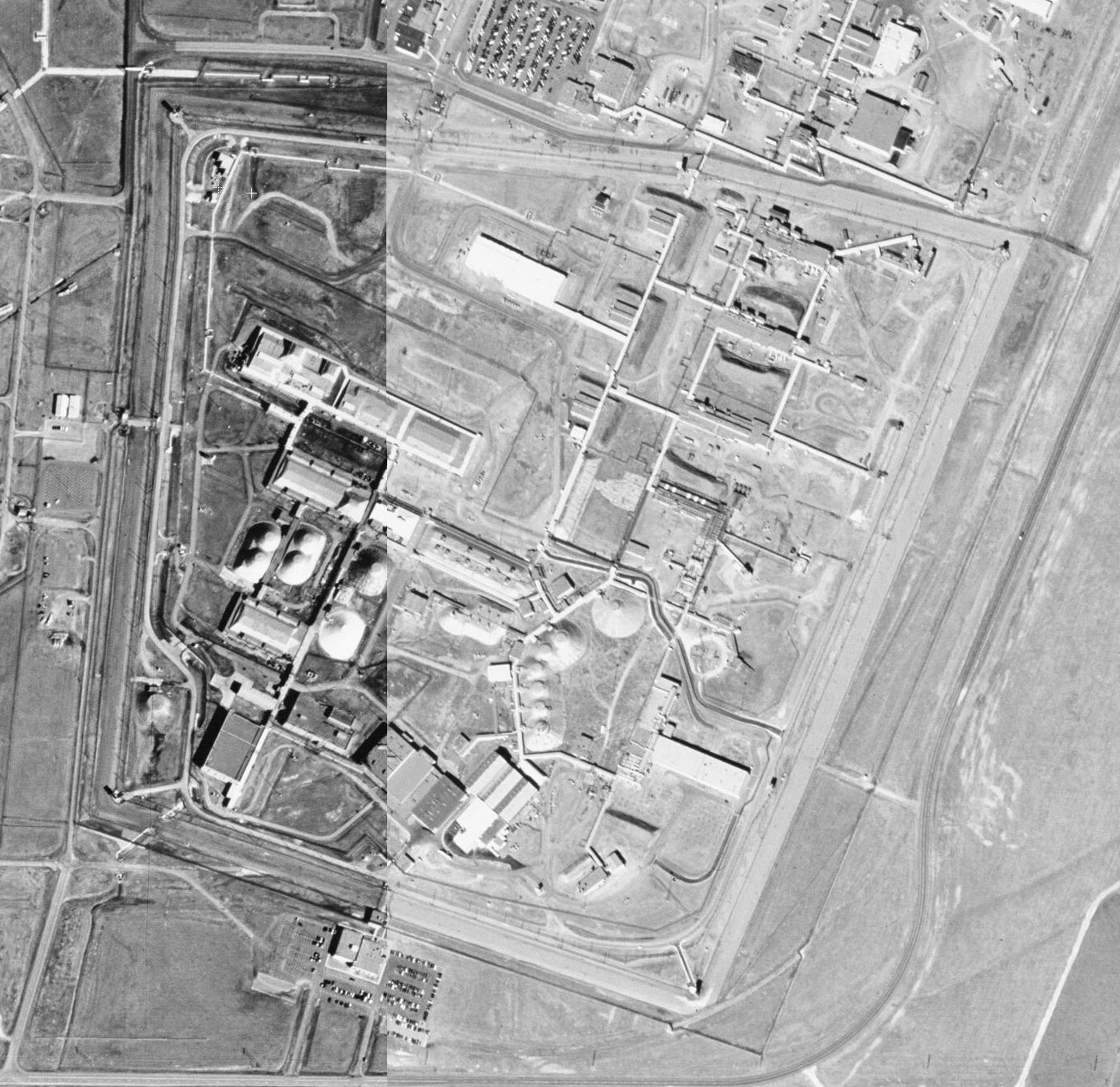 |
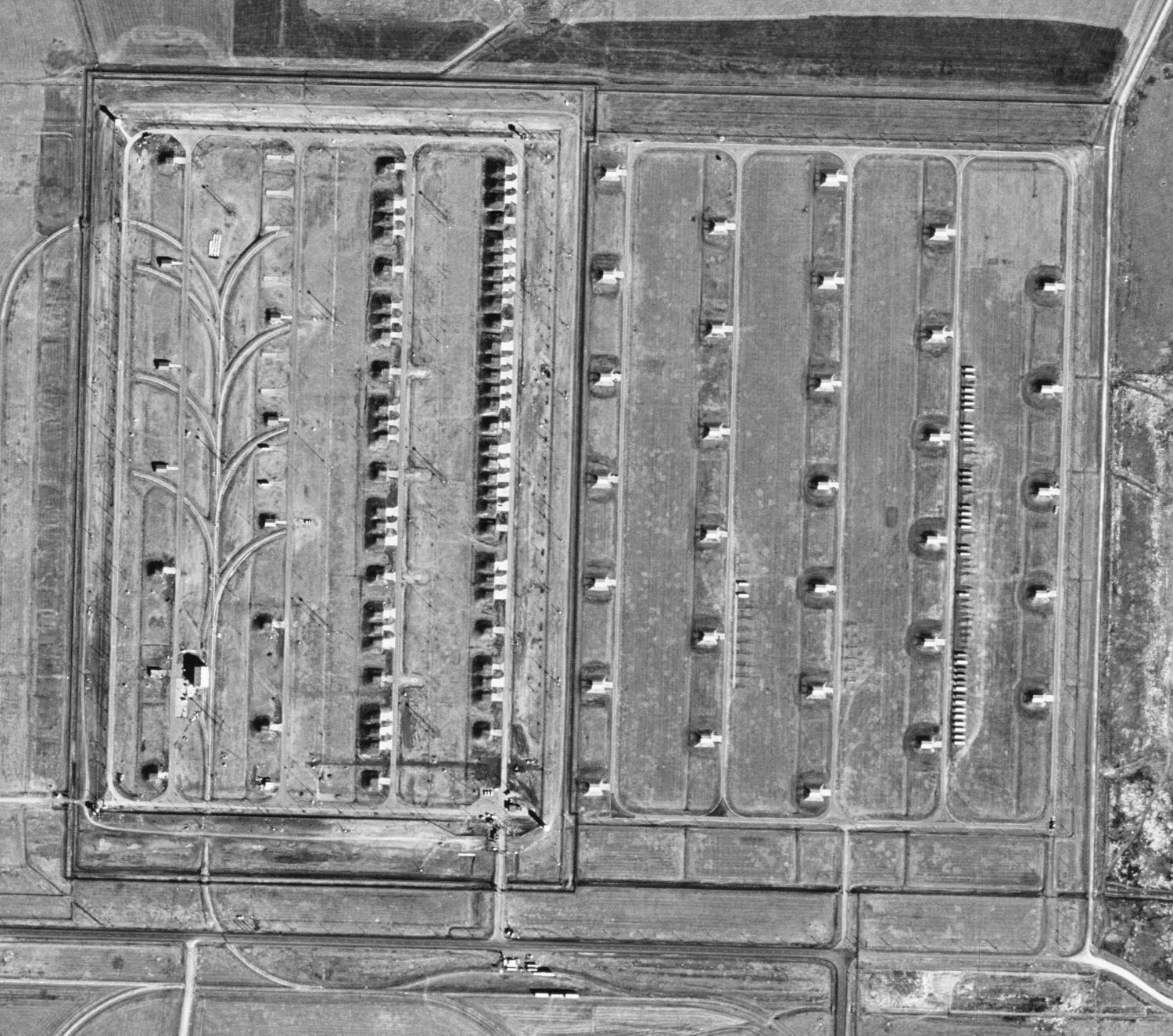 |